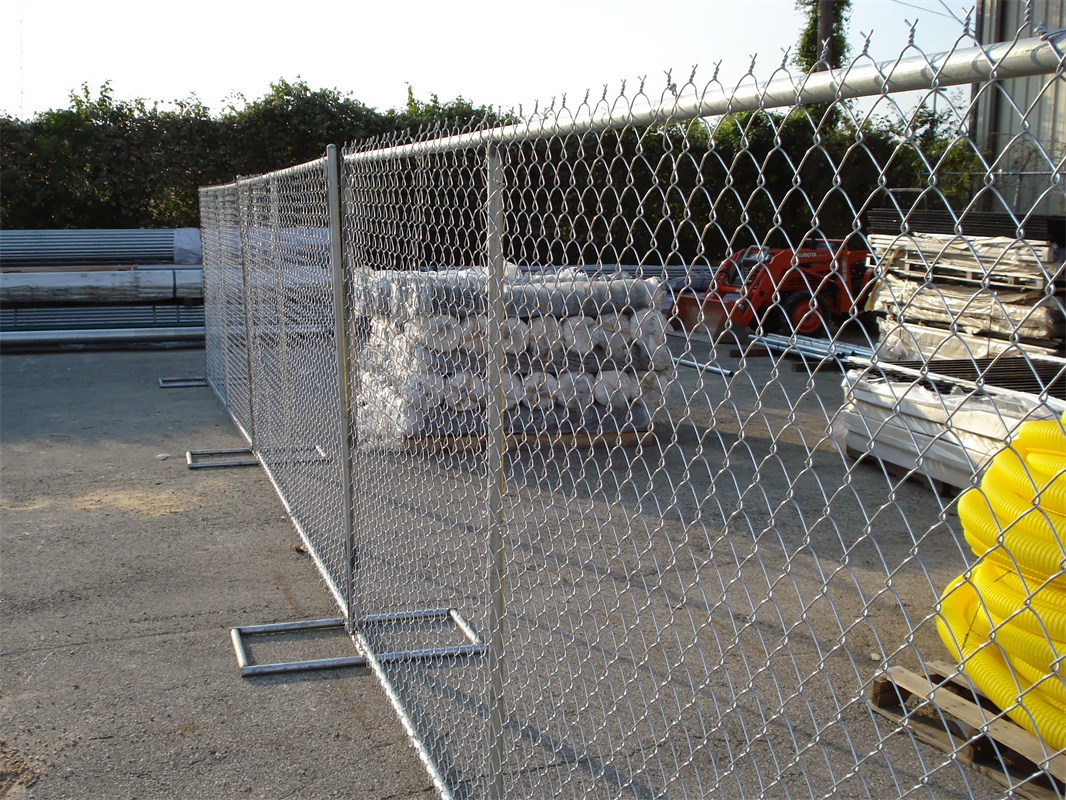News
temporary fence for American

In the U.S., temporary fencing is used across various applications such as construction, events, and restricted areas. Here’s an overview of specifications, applications, and considerations for using temporary fencing in the American context:
Key Specifications for American Temporary Fencing
Material and Coating
Chain Link Fencing: Made of galvanized steel, commonly used for durability and weather resistance.
Alternative Materials: Plastic or welded wire panels for light-duty applications, or PVC-coated chain link for added corrosion protection.
Height Options
Common Heights: 4, 6, and 8 feet are typical, with 6-foot being standard for construction zones and 8-foot used in high-security areas.
Customization: Height may vary depending on specific state regulations, site requirements, or privacy needs.
Base Support
Portable Stands: Stands made from concrete or steel provide stability and allow for repositioning.
Additional Weight: Sandbags or ground stakes are used to secure the fence in windy areas or on uneven surfaces.
Connections and Stability
Clamps and Couplers: Secure adjacent panels to prevent shifting and unauthorized entry.
Bracing: For taller fences or exposed areas, braces or supports can prevent panels from tipping over.
Optional Features
Privacy Screens: Mesh or fabric screens provide visual privacy and reduce wind and dust.
Access Gates: Temporary gates are commonly added for controlled entry and exit, often with wheels for ease of access.
Barbed or Razor Wire: Additional deterrent options can be installed on top for enhanced security in high-risk areas.
Applications of Temporary Fencing in the U.S.
Construction Sites
Purpose: To secure the perimeter, prevent unauthorized entry, and ensure worker and public safety.
Requirements: Typically 6-8 feet high, with optional privacy screens and signage. Meets OSHA and local regulatory standards.
Public Events and Crowd Control
Purpose: To control crowds at festivals, concerts, sports events, or fairs and create restricted zones.
Requirements: 4-6 feet high fencing with optional gates and privacy screens for specific zones.
Roadside and Highway Projects
Purpose: Temporary barriers for work zones to protect workers and direct traffic.
Requirements: 6 feet or taller with reflective markers for visibility, often using chain link with durable stands.
Emergency and Disaster Response Zones
Purpose: Secures response zones in areas affected by natural disasters, fires, or other emergencies.
Requirements: Quick-to-deploy fencing with signage and optional privacy screens to create secure perimeters around relief efforts.
Restricted Areas and Quarantine Zones
Purpose: To designate restricted access areas for environmental or health-related quarantine purposes.
Requirements: 6-8 feet high fencing with visible signage, often with privacy screens and additional barriers as needed.
Considerations for Compliance and Installation
Local Regulations and Permits
Many U.S. municipalities and states have regulations governing temporary fencing, especially for construction and event sites. Requirements might include minimum fence height, distance from public walkways, or the need for specific types of screening.
Signage and Visibility
Signage such as “No Trespassing” or “Restricted Access” may be mandated on temporary fences in public or restricted areas. Reflective markers or high-visibility flags may be needed for roadside fencing.
Safety Standards
Ensure that fencing meets OSHA or local safety standards, especially in construction or high-traffic areas. This includes sturdy installation, secure panel connections, and fall prevention measures for high or braced fences.
RELATED NEWS
- Powder Coated Anti-climb & Anti-cut 358 Security Fence 2023-06-09
- Palisade Fencing 2023-06-01
- Australia Temporary Fence 2023-06-09
- PVC Coated Cyclone Wire Fence Used for Tennis Court 2023-06-09
- Anti-Climb PVC Coated Welded Wire Fence 2200 x 3000mm 2023-06-09
CATEGORIES
LATEST NEWS
CONTACT US
Contact: Mr.Shi
Phone: +8613439184550
E-mail: haijinshian@gmail.com
Whatsapp:008613439184550
Add: CN , Hebei , Hengshui, , South Of 100 Meters Westbound Road At The Intersection Of Siwang Street And Beixin Avenue
